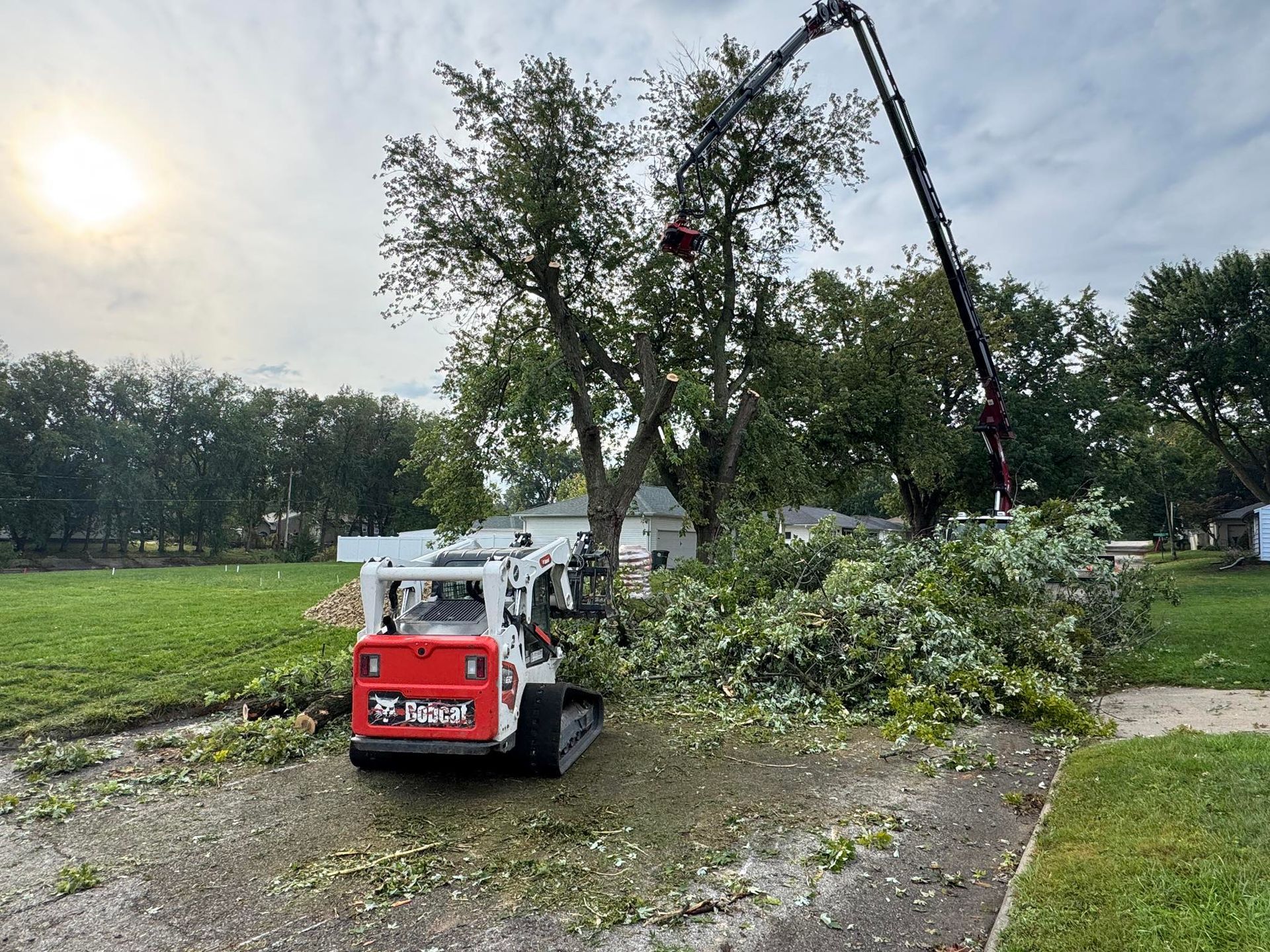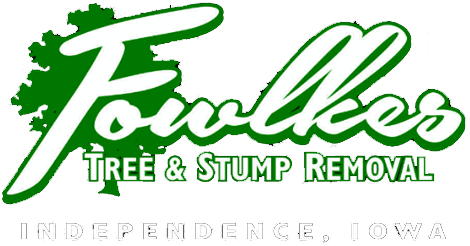How Stump Grinding Improves Your Lawn’s Health and Appearance

Table of Contents
- Why Your Lawn Needs Proper Care After Tree Removal
- Understanding the Difference Between Stump Grinding and Stump Removal
- How Stump Grinding Enhances Your Lawn’s Health
- The Aesthetic Benefits of Stump Grinding for Curb Appeal
- Common Lawn Issues Caused by Untreated Stumps
- Steps to Take After Stump Grinding for Complete Lawn Restoration
- Professional Tips for Maintaining a Healthy, Beautiful Yard
- Why Hiring Experts for Stump Grinding Matters
- Conclusion
Key Takeaways
- Stump grinding prevents pests, disease, and root regrowth that damage lawns.
- Removing old stumps improves soil quality and grass health.
- A stump-free lawn enhances curb appeal and makes yard care easier.
- Professional services ensure safe, efficient stump removal and long-term lawn restoration.
Why Your Lawn Needs Proper Care After Tree Removal
A healthy, well-maintained lawn does more than just look good—it supports soil health, prevents erosion, and creates a welcoming outdoor space. However, after removing a tree, many homeowners overlook one critical step: dealing with the stump left behind. Neglecting old stumps can cause more harm than you might think. From attracting pests to creating tripping hazards, those leftover pieces of wood can quietly sabotage your lawn’s health and appearance over time.
This is where
stump grinding becomes essential. By breaking down the stump below ground level, you not only clear the area but also prepare your lawn for new growth and improved soil balance. If you want to learn more about how proper stump and root grinding can prevent future tree issues, it’s best to understand the full benefits of the process.
Understanding the Difference Between Stump Grinding and Stump Removal
Many people use stump grinding and stump removal interchangeably, but they’re not the same.
Stump grinding involves using specialized equipment to grind the stump down to wood chips, leaving the roots to decay naturally underground. This method is faster, less invasive, and more affordable for most homeowners.
On the other hand, stump removal extracts both the stump and its entire root system. While it completely eliminates the tree remnants, it also leaves a larger hole that requires backfilling and lawn restoration afterward.
For most residential properties, stump grinding is the preferred choice because it keeps your yard level and ready for reseeding or landscaping.
How Stump Grinding Enhances Your Lawn’s Health
Tree stumps might seem harmless, but they can significantly impact your yard’s ecosystem. Here’s how stump grinding directly contributes to better lawn health:
- Prevents pest infestations
Decaying stumps are a magnet for termites, carpenter ants, and beetles. These pests don’t stop at the stump—they can move on to healthy trees or even your home. Grinding removes the wood that attracts them, creating a cleaner, pest-free environment. - Stops disease from spreading
Old stumps can harbor fungi and bacteria from diseased trees. These pathogens can easily spread through the soil, infecting nearby plants or grass. With stump removal or grinding, you eliminate that hidden source of contamination. - Encourages new grass growth
Once the stump is gone, your lawn can breathe again. The open soil allows for better water absorption, sunlight exposure, and root expansion—key elements for successful lawn restoration. - Reduces competition for nutrients
Even after being cut, some roots continue to draw water and nutrients from the soil. Stump grinding prevents this competition, allowing surrounding plants and grass to flourish naturally.
The Aesthetic Benefits of Stump Grinding for Curb Appeal
A beautiful lawn sets the tone for your home’s entire appearance. Unfortunately, nothing disrupts that visual harmony quite like an old, weathered stump.
When you invest in
stump grinding services, you instantly improve your property’s look. The smooth, even surface left behind makes it easier to mow, seed, or landscape without obstacles. Whether you plan to plant flowers, install a garden bed, or simply enjoy a clean, open yard, grinding creates a blank canvas for new possibilities. Beyond appearances, a well-maintained yard can even increase property value—especially when potential buyers see a neat, stump-free lawn that’s easy to maintain.
Common Lawn Issues Caused by Untreated Stumps
Leaving stumps untouched can cause more long-term trouble than you realize. Some of the most common problems include:
- Root regrowth:
Old roots may sprout new shoots, creating uneven patches in your yard. - Soil imbalance:
As stumps rot, they can change the pH level of surrounding soil, affecting grass and plant growth. - Pest invasion:
Insects, rodents, and fungi thrive in decaying wood. - Physical hazards:
Stumps and roots can damage lawn equipment or cause tripping accidents.
By taking care of
stump removal or grinding early, you prevent these problems before they start and make your lawn safer and easier to maintain..
Steps to Take After Stump Grinding for Complete Lawn Restoration
While it’s tempting to grab a pair of shears and do it yourself, DIY tree pruning often leads to more harm than good. Common mistakes include:
- Over-pruning:
Removing too much foliage at once can shock the tree, reducing its ability to photosynthesize. - Improper cutting angles:
Poor cuts can create wounds that invite decay and pests. - Topping:
Cutting the top of a tree drastically weakens its structure, making it more prone to breakage.
These errors can compromise both the tree’s health and the safety of your property. That’s why relying on tree trimming services performed by trained professionals is the smartest choice.
Why Hire Professional Tree Trimming Services
After stump grinding, the job isn’t quite finished. Proper aftercare ensures your yard recovers quickly and looks better than before.
- Remove leftover debris. Clear out wood chips and grindings to make room for fresh soil.
- Fill the hole. Add a mixture of topsoil and compost to level the ground.
- Reseed or sod. Spread grass seed over the filled area or lay new sod for an instant green patch.
- Water and maintain. Keep the area moist to help grass establish strong roots.
- Fertilize as needed. Adding nutrients supports new growth and accelerates lawn restoration.
With consistent care, the area where the stump once stood will blend seamlessly with the rest of your lawn.
Professional Tips for Maintaining a Healthy, Beautiful Yard
A healthy lawn doesn’t end with stump grinding. Regular maintenance keeps it thriving year-round.
- Mow regularly, but not too short. This helps grass develop deeper roots.
- Aerate annually. It improves soil drainage and oxygen flow.
- Test your soil. Adjust nutrients and pH levels based on results.
- Watch for signs of stress. Brown patches or thinning areas can signal nutrient deficiencies.
When combined with stump removal and proper restoration, these steps create a resilient, attractive lawn that enhances your property’s value and livability.
Why Hiring Experts for Stump Grinding Matters
DIY stump grinding might seem tempting, but it requires heavy-duty equipment and a solid understanding of safety techniques. Mistakes can cause property damage or injury.
Hiring professionals like Fowlkes Tree and Stump Removal ensures your lawn gets expert care. Our team uses advanced machinery to remove stumps efficiently while minimizing disruption to your yard. We handle everything—from preparation and grinding to cleanup and lawn restoration—so you can enjoy a clean, revitalized outdoor space without stress.
Professional services also guarantee complete removal of visible and hidden stump parts, preventing regrowth and future issues.
Conclusion
Old stumps do more than clutter your yard—they can damage your lawn’s health, invite pests, and hinder new growth. With stump grinding, you reclaim your outdoor space, promote better soil conditions, and achieve lasting lawn restoration. Whether you want to improve your home’s appearance or ensure long-term lawn health, grinding is the most effective solution.
If you’re ready to transform your yard into a cleaner, healthier space, contact Fowlkes Tree and Stump Removal today.
Visit fowlkestreeandstumpremoval.com, call (319) 327-1199, or send us a message at fowlkestreeandstumpremoval@gmail.com to learn more about our expert stump grinding and stump removal services.
Frequently Asked Questions
Why do we recommend stump grinding after tree removal?
We recommend stump grinding because it prevents pest infestations, disease spread, and root regrowth. It also improves your lawn’s overall health and makes lawn restoration easier by clearing space for new grass to grow evenly.
What’s the difference between stump grinding and stump removal?
Stump grinding shreds the stump below ground level, leaving roots to decay naturally. Stump removal, on the other hand, pulls out the entire root system. We usually suggest stump grinding for faster results and easier lawn restoration.
How does stump grinding help with lawn restoration?
By removing the stump, we allow your soil to breathe and absorb nutrients again. Stump grinding clears the area for new grass to grow and ensures smooth, even lawn restoration that blends seamlessly with your existing yard.
Can we do stump removal ourselves?
We don’t recommend DIY stump removal—it requires heavy equipment and safety expertise. Our team handles stump grinding and removal safely and efficiently, helping you avoid property damage while preparing your yard for complete lawn restoration.
How soon can we restore our lawn after stump grinding?
You can usually start lawn restoration right after stump grinding. Once we remove wood chips and fill the hole with fresh soil, we can reseed or lay new sod immediately, helping your lawn recover faster and look better than before.
